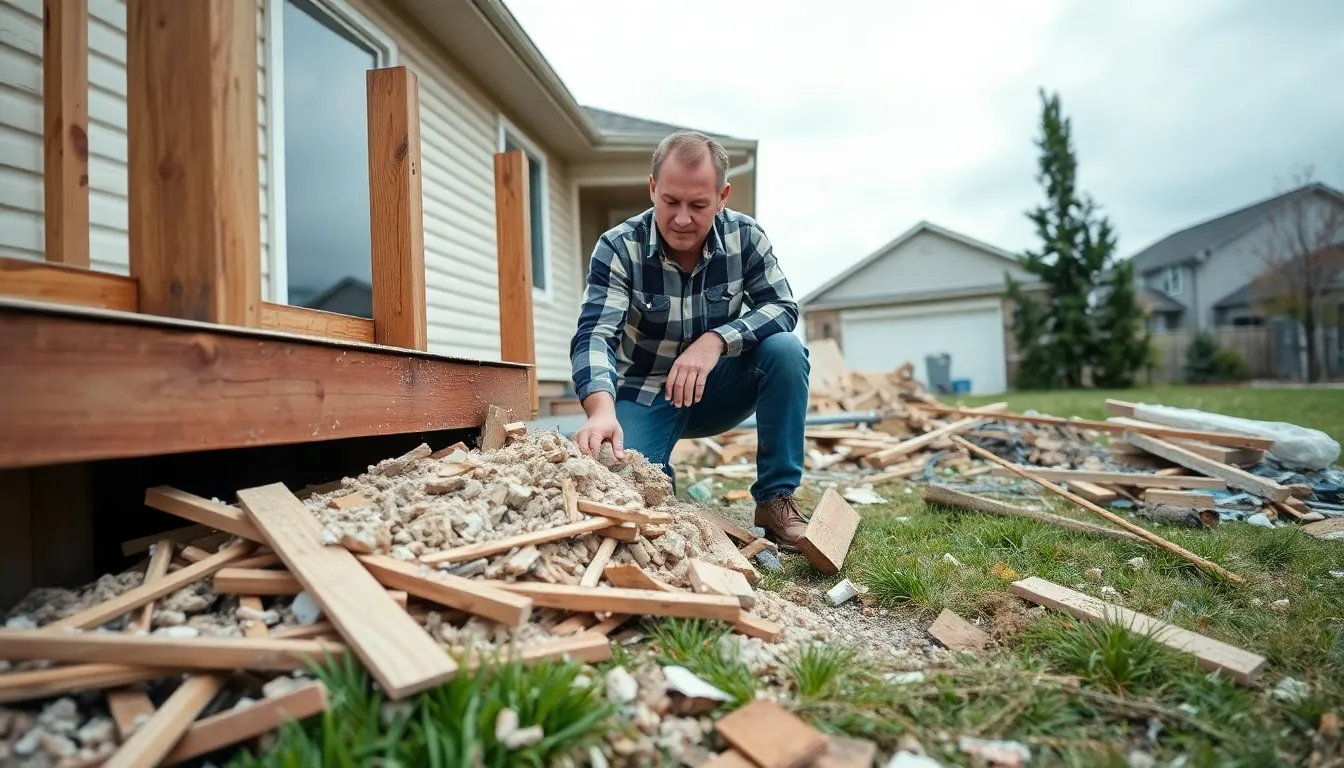Table of Contents
ToggleIn the realm of real estate, dust and debris may seem like mere nuisances, but their presence can have significant impacts on property transactions and values. Understanding these elements is essential for both buyers and sellers. In this text, we investigate into the nuances of dust and debris, exploring sources, effects, management strategies, and prevention techniques particularly relevant for Homerocketrealty. Grasping the importance of a clean environment not only helps in safeguarding property values but also promotes a smoother transaction process, making it a crucial focus for anyone in the real estate market.
Understanding Dust And Debris In Real Estate

Dust and debris encompass a variety of particles and materials that collect in and around properties. Dust generally consists of tiny particles from various sources, including soil, pollen, and even human wastes, whereas debris refers to larger, unwanted materials like construction waste or discarded items. In real estate, dust and debris are not merely aesthetic concerns: they can pose health risks and indicate unresolved maintenance issues.
From a buyer’s perspective, dust levels can reflect the overall upkeep of a property, leading to presumptions about the owner’s diligence in maintaining the home. For sellers, addressing these concerns proactively can enhance the property’s marketability.
Common Sources Of Dust And Debris
In real estate, numerous sources contribute to dust and debris accumulation.
Construction Activities
New construction or renovation projects often lead to significant debris and dust. Contractors can inadvertently spread particles throughout the surrounding areas, affecting nearby properties.
Landscaping
Landscaping activities can also generate debris, including soil, grass clippings, and leaves. Seasonal changes frequently lead to more debris as trees shed leaves and other flora naturally decay.
General Wear and Tear
Properties that experience considerable wear and tear, such as those in high-traffic areas, tend to accumulate dust and debris more rapidly. Industries such as hospitality often face this issue, necessitating regular clean-ups.
Impact Of Dust And Debris On Property Value
The presence of dust and debris can significantly affect property values. Buyers may perceive properties with accumulated dust and debris as poorly maintained, leading them to question the owner’s overall care. A clean, well-maintained home typically commands a higher price in the market.
Also, dust can trigger health issues for potential buyers, further diminishing a property’s appeal. In extreme cases, persistent neglect of dust and debris can lead to declines in property values by 5-10% or more, depending on the extent of the issue.
Managing Dust And Debris During Transactions
Effective management of dust and debris is crucial during real estate transactions. Sellers must understand the importance of presenting a clean home, which often entails deep cleaning before open houses and viewings.
Professional Cleaning Services
Hiring professional cleaning services can help maintain a pristine environment, particularly in homes that have undergone renovations. Besides, potential buyers often appreciate homes that exhibit attention to cleanliness, encouraging quicker sales.
Open Communication
Buyers should communicate concerns about dust and debris with their real estate agents. Open dialogue can lead to negotiating repairs or clean-ups before finalizing a sale.
Prevention Techniques In Real Estate Management
Prevention is key in managing dust and debris effectively. Here are several techniques that can be employed:
Regular Maintenance
Regular maintenance checks can help identify sources of dust accumulation, allowing owners to address these issues promptly. Seasonal clean-ups should be scheduled routinely to manage outdoor debris.
Landscaping Management
Investing in proper landscaping management, such as mulching and trimming, can reduce the volume of natural debris that collects around a property.
Air Filters
Using air purifiers and changing HVAC filters regularly can minimize indoor dust and maintain air quality, thereby enhancing the overall environment.
Benefits Of A Clean Environment For Buyers And Sellers
A clean environment benefits both buyers and sellers in numerous ways. For sellers, a clean property increases appeal and can lead to higher offers. For buyers, a clean home ensures peace of mind, reducing concerns about the need for immediate clean-ups after purchase.
Eventually, maintaining a clean property can lead to reduced negotiation obstacles and enhance the overall selling or buying experience, establishing a more favorable outcome for all parties involved.
Conclusion
To conclude, dust and debris play an often underestimated role in the real estate market. Understanding their sources and impacts, coupled with effective management and prevention techniques, can lead to better property values and smoother transactions. For both buyers and sellers, recognizing the importance of a clean environment is crucial for making informed decisions in real estate. As the market continues to evolve, both parties must remain diligent in addressing these issues to foster not just transactions, but lasting relationships within the Homerocketrealty community.







